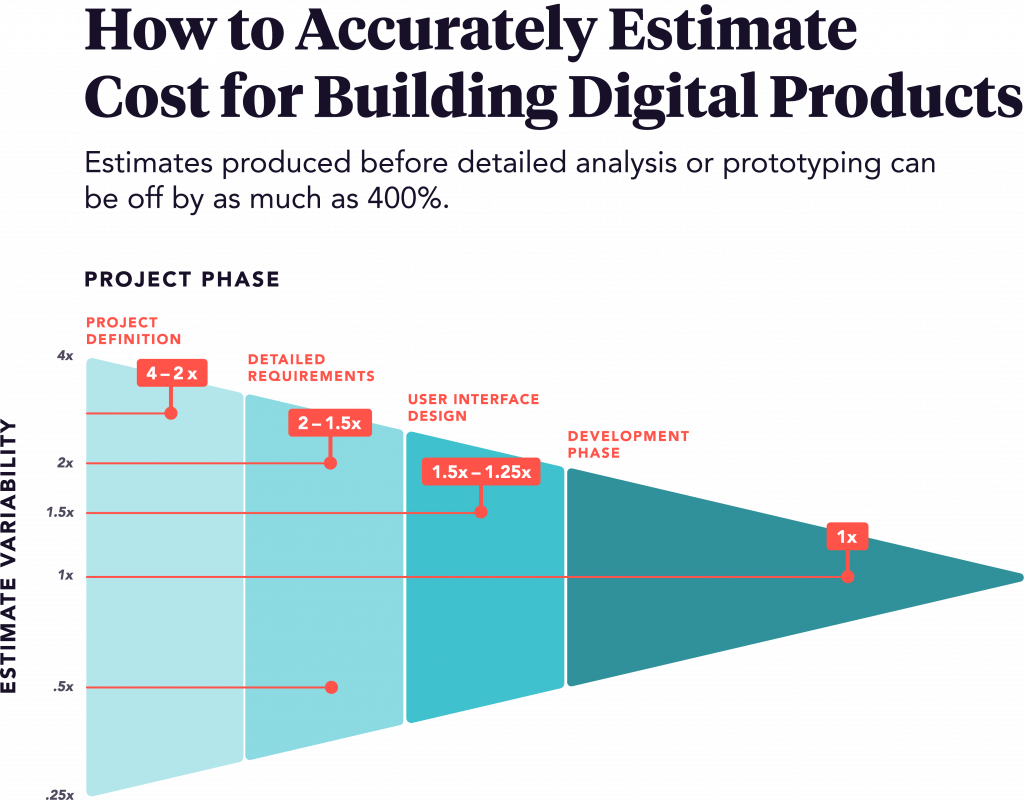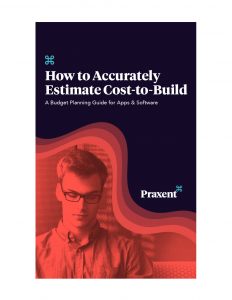
How Designers, Developers, & Businesses Work Together (Part 1)
By Ryan Spanswick, former Director of Design at Praxent
This article is the first in a series on a three-part human-centered design approach to new product development.
In the ideal human-centered design environment, product leaders, designers, coders, engineers and stakeholders work together to create digital products that satisfy user requirements while creating business value.
This series explains one way that process can play out in three phases. Each phase focuses on a core aspect of product success, overlapping with the other two phases for well-rounded results:
1. Focus on the Business
Keep reading to learn how product leaders advocate for business objectives in a human-centered design approach to new product development.
2. Focus on the User
>> Learn 4 ways design teams advocate for users in the second part of this series.
3. Focus on Functionality
>> Learn how developers and engineers interact with the human-centered design process.
Focus on the Business: Cost, Timeline & Priorities
Product strategists, product owners and product managers spearhead the business-advocacy aspect of human-centered product development. While not all teams have a single individual leading in each of these roles, a true human-centered design approach requires someone to fulfill each function, even if it’s one person fulfilling all of the functions.
>> Learn how a digital strategy can unlock competitive advantage.
The goal of product strategists, owners and managers is to advocate for the business behind a product, ensuring ROI and client satisfaction.
While these engagement leaders (product strategists, product owners, product managers) lead the way in identifying business value and developing product roadmaps, they are not the only ones weighing in at this crucial phase of the product lifecycle. The most effective engagement leaders will incorporate design and development input into their work early on.
Free Budget Planning Guide for Apps & Software
Dependable timeline and budget estimates are critical to making sure a product delivers a return on investment. When it comes to budget and timeline, projects built around faulty guess-work are usually doomed to fail.
Download our free whitepaper on how to accurately estimate cost-to-build, and learn how product planning can be predictable as well as flexible.
Engagement Leader Role | Business Discovery Phase Human-Centered Design
At this stage, product strategists, owners and managers work to clearly envision a product that achieves optimal business impact by satisfying strategic user demands. Here are their core activities:
Competitive Analysis
Strategists research the market, collecting data on products similar to the one being developed. They investigate for insight into who is using the products and in what context they are being used. Their goal is to identify gaps in the market and current product weaknesses.
Stakeholder Interviews
Engagement leaders develop a list of people (usually from the client company) whose insight and approval are critical to the success of the product. Interview sessions with these stakeholders allow strategists and managers to learn more about business objectives for the product as well as cultivate buy-in from key internal players.
Define ROI
What will it take to make a digital product worth the investment? Engagement leaders work to identify high-stakes business problems and the innovative solutions that would create the most new value.
Design Team Role | Business Discovery Phase Human-Centered Design
The design team plays a key support role in the business-focused phase of human-centered product development. User researchers work closely with engagement leaders, providing them with critical information on the priorities and needs of the people who will use the product.
Engagement leaders further develop the product concept based on user research, ultimately delivering a product roadmap built to suit both business and user objectives.
Development Team Role | Business Discovery Phase Human-Centered Design
At this stage, developers and engineers provide input in two main ways. They provide the product manager with time and effort estimates for each feature on the product plan. They also weigh in on the direction of the product concept, ensuring it is technically sound and feasible to execute under the given timeline and budget.

Product leaders work with designers and engineers to develop accurate estimates for building software and apps.
What is Minimum Viable Product?
Through research, analysis and cooperation with designers and engineers, engagement leaders work toward a core deliverable: defining Minimum Viable Product (MVP). MVP is the version of the product that has the least number of features possible while still being suitable for use by early adopters.
Once the MVP has been released to initial users, teams can apply user feedback to ongoing development of the full product vision.
Starting with an MVP is the cost-effective way to develop and launch a new digital product for the following reasons:
-
- When engagement leaders define the MVP, they are essentially defining priorities. Product plans centered around a MVP concept ensure the project stays focused on activities that will pay off.
- By releasing a usable product before the full vision is completely executed, businesses can begin generating revenue from their product as soon as possible to offset the cost of ongoing development.
- Course correcting based on early adopter feedback leads to higher adoption rates of later versions.
- Orienting a product plan around the MVP concept allows teams to test and validate before investing in development.




Leave a Reply